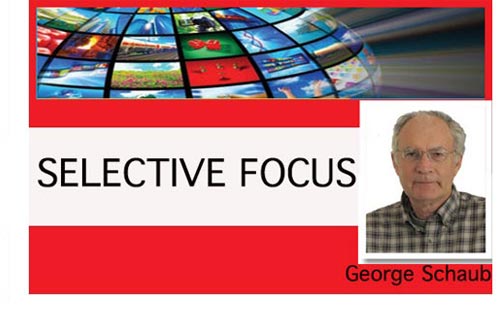
I was saddened when I learned American Photo magazine would cease print publication in April. While I am not privy to the inside machinations that caused this move, I suspect they are not so different from those that have seen numerous photo magazines bite the dust worldwide.
Aside from the lack of support via advertising from the photo industry itself, which has seen greener pastures in other media outlets and has cut budgets due to its own troubles, it is symptomatic of the challenges faced by all magazine publishing with the emergence of the web as the chief information venue.
 The case of American Photo is particularly troubling to me, as historically it displayed a wide range of images on glossy stock with a sense of art direction that knew how to splash an image across the page. It had good writers and editors; it covered everything from the history of photography and photojournalism to advertising and celebrity images. While not everything they published appealed to me, and at times they went a bit overboard with the superstar bit, they did so with strong visual presentation, incisive and thoughtful writing, and a certain arrogance and panache. They delivered a sense of excitement about photography and photographers, and they made it all seem glamorous and enticing. For a while they were read as much by those interested in the art of photography as by photographers themselves.
The case of American Photo is particularly troubling to me, as historically it displayed a wide range of images on glossy stock with a sense of art direction that knew how to splash an image across the page. It had good writers and editors; it covered everything from the history of photography and photojournalism to advertising and celebrity images. While not everything they published appealed to me, and at times they went a bit overboard with the superstar bit, they did so with strong visual presentation, incisive and thoughtful writing, and a certain arrogance and panache. They delivered a sense of excitement about photography and photographers, and they made it all seem glamorous and enticing. For a while they were read as much by those interested in the art of photography as by photographers themselves.
Now that the publication has been consigned to the web, where it will compete with eight billion other photo sites, it strikes me that the impact of the work shown in the magazine might be diminished. Call me old-fashioned, but images on the printed page have a presence, with a surface and depth that allow for a special consideration. It encourages the viewer to dwell on both the content and the richness of the image. On the web, those images become more veneer than rich visual experience.
The appeal of the printed image might seem archaic, but for me something clearly gets lost in translation when the same image that appears on good paper stock appears on an LCD. Maybe it’s the reproduction qualities of CMYK versus sRGB, or just the fact that our eyes and brain work differently when confronted with backlit versus reflective material.
True, there is a gap between the experience of seeing a real live print in a gallery compared to looking at it on a well-printed page. But that gap is thin when compared to the wide crevasse between the visual experience of a printed image and one on-screen. Double the disappointment when the viewer is checking it out on a 3- or even 5-inch middling resolution screen, whose optimum viewing conditions are dim lighting or shade at best.
Much has been written about the degeneration of “image quality appreciation” the smartphone has engendered. Despite the claims of super-megapixel phone and tablet makers, the simple truth is that while the images produced and viewed on them are acceptable, good enough for screen-to-screen communication, they tend to reduce any image to, at best, a snapshot.
Snobby? Perhaps, but I’ve been around long enough to know what a good and even a great print looks like. I just don’t buy into the smartphone image as being capable of producing a photographic experience, taking or viewing, that stirs the user to take up a camera and engage in the mysteries and charms of photography. It’s gotten to the point where the old step-up appeal of moving point-and-shoot camera users to a better camera is being aimed at the smartphone crowd, for good reason. There’s no denying that smartphones are great as image communication devices—showing what one had for dinner or a pet’s tricks—and increasingly as the venue for citizen photojournalists. But as devices that can produce and display quality images, they fall far short.
Don’t get me wrong: I shoot with a smartphone to share my travels via e-mail or text message as a kind of visual postcard. But when my intention goes beyond that, I take out the DSLR and get to work. I remain convinced that making images with any device makes everyone more visually aware and hopefully will encourage them to one day realize that photography might be something they want to pursue more seriously. I’ve seen this more and more, with younger folk toting around their mirrorless or DSLR camera on the prowl for images—a good sign for us all.
But the question remains: how does a challenged industry faced with disruptive technology adapt and make itself relevant? Does it try to co-opt it, as we have seen in the raft of “connected” cameras, which, in the early manifestations, worked with varying degrees of success? Or does it tout its true advantages—low-light performance, the wide range of lenses and optical options, the ability to actually see what you’re shooting in bright sunlight, framing rates, the massive increase in image quality, and perhaps as important, the separation from the herd by joining the fellowship of those who practice the art and craft of photography?
In short, there is an exceptionalism to being a photographer who works with good equipment and who recognizes what it takes to create images that go beyond the norm. Think about how photography has always been promoted: through emulation, education, an awareness of the past work of exemplary photographers, and a lifestyle and form of expression. It was an aspiration, and the photo magazines became, in part, the curators and promotional venue of this attitude.
Yes, this often led young photographers to copy the look and subject matter of those recognized as accomplished photographers and of images they saw “made it” onto a magazine’s pages. To me, this was a necessary learning stage that hopefully led those engaged in the craft to find their own style and point of view.
I am not here to tilt at windmills and condemn the smartphone as a mere snapshot camera or deny its massive effect on the photo industry. Or even to relegate the web to the lowest common denominator of visual experience. I do feel that the increasing loss of photo magazines, especially those that glorify and promote photography in not just words but in the quality of images they print, is not a positive sign for our industry. While they might at times overly cater to an advertiser’s whims, any photo magazine I have worked on or have followed did much more than that. They have and had a passion for photography and all that entails, commercially and aesthetically, serving as an important element in the promotion of both photography and the photo industry.
This is not to say that the ongoing demise of the photo magazine business is a done deal; quite a few soldier on. But without the support of the photo industry, whose ad and promotional budgets are increasingly being fed into the growing maw of the web, the future does not look bright.
American Photo magazine had a long and storied history, and it certainly did its part in promoting the lifestyle and excitement of photography. Its passing marks more than just another print magazine going down for the count.





